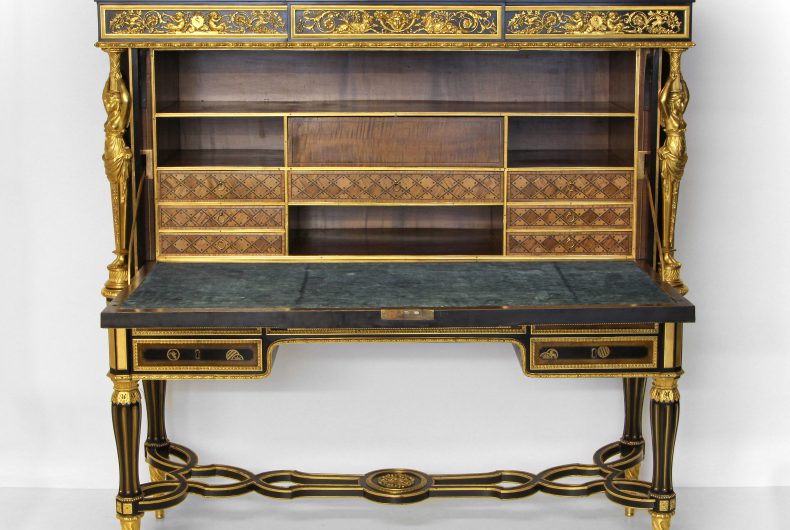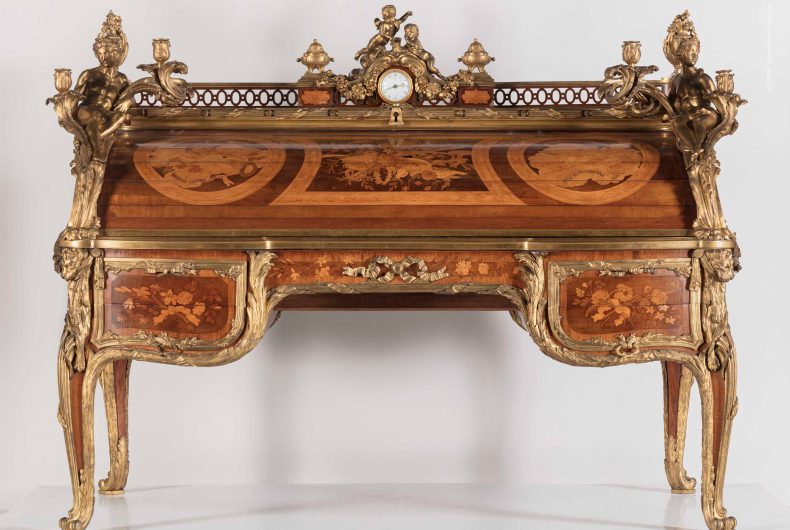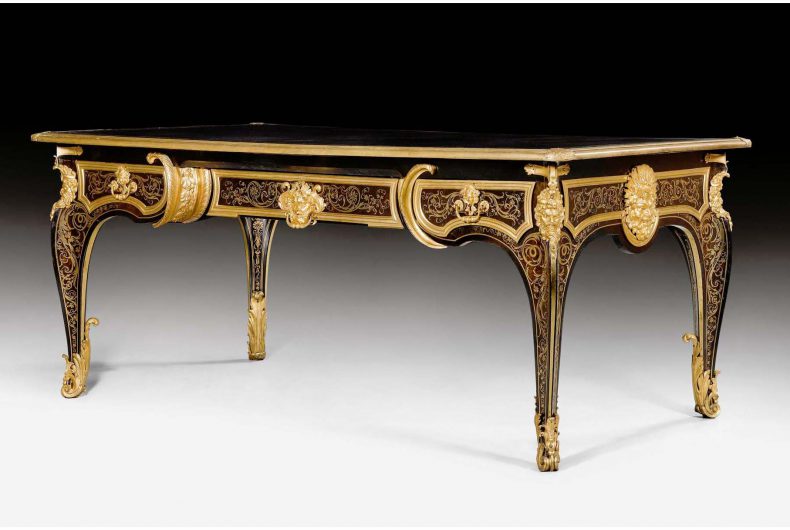
WORKS OF ART AND FURNITURE REFERENCES
The data that an archaeodendrometric study allows to collect and cross-reference can only claim relevance if the exploration of the potential offered by the object is exhaustive; the most opportune moment to study it remaining the period during which it is cleaned, restored by the persons in charge of its conservation.
17th / 18th century furniture (Parisian and regional cabinetmakers)
French and foreign museums, institutions and private collectors use archaeodendrometric studies to characterize the wood of furniture and provide knowledge on the practices of the workshops of master cabinetmakers (Oppenordt, Boulle, BVRB, Oeben, Riesener, Latz, Weisweiler, Levasseur, etc.)
Collaborations: Louvre Museum, Palaces of Versailles, Center for Research and Restoration of French Museums, Jean-Paul Getty Museum, Victoria & Albert Museum, Private workshops…
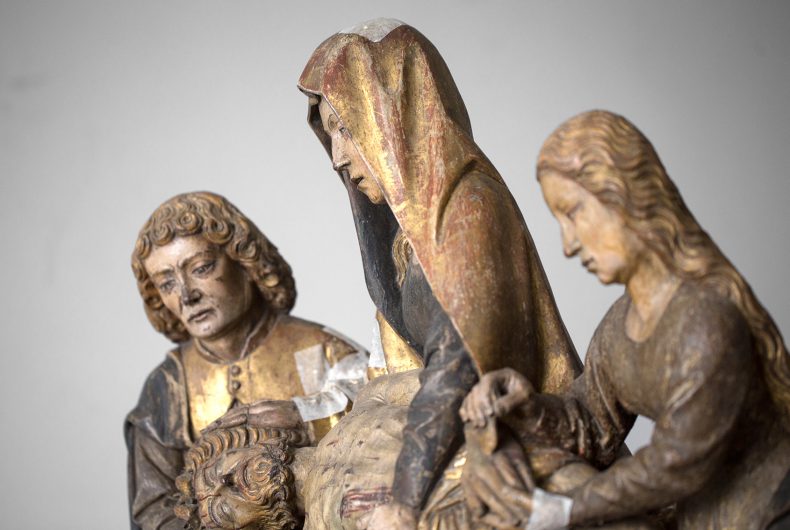
Sculptures and carved works - 13th / 19th centuries
Whether monoxyl or assembled, the sculpted pieces demonstrate specific know-how and techniques, both in the selection and cutting of wood, as well as in their assembly and their size, etc. resulting in various ongoing research programs.
Collaborations: Restoration and Conservation Nucléart Workshop, Louvre Department of Works of Art, LP3 Conservation, Private workshops
Stalls of the Saint-Martin-aux-Bois Church (France) - 1498
The stalls and the wall paneling constitute a privileged field of study allowing to collect massively data on the woodwork by the various guilds that worked on their realization and assembly.
Collaborations: LP3 Conservation workshop, Organization for the Preservation of medieval Picard stalls, Regional Conservation of Historic Monuments …
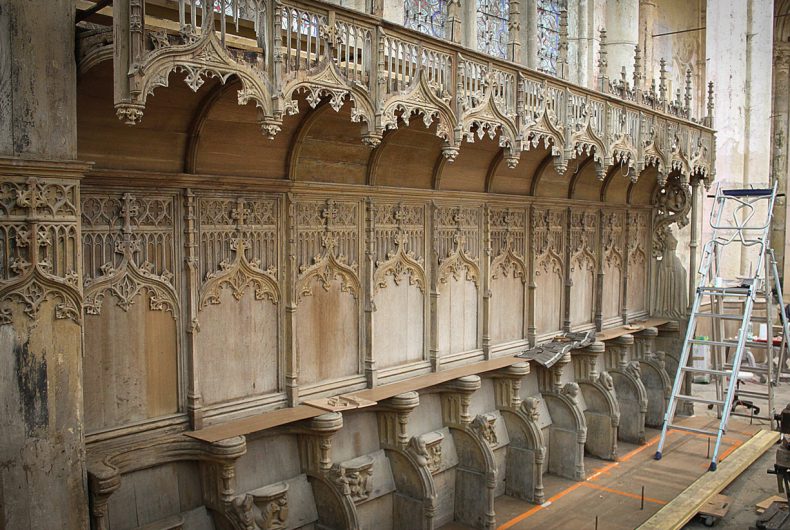
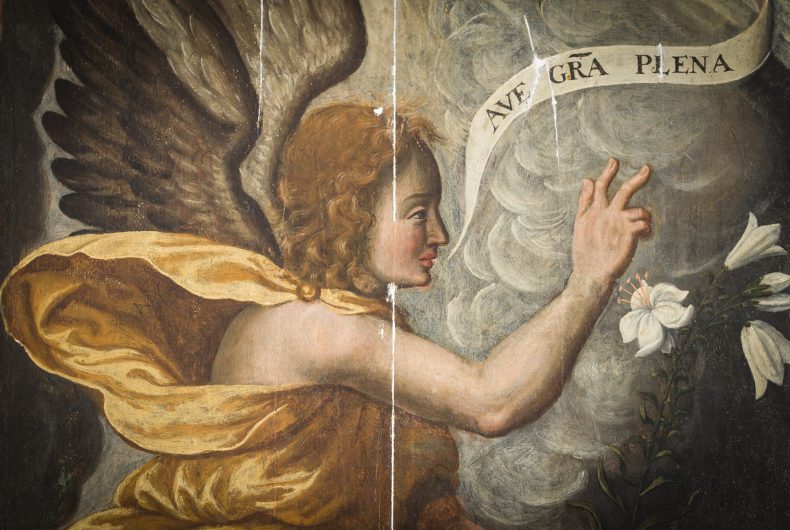
Painted panels - 14th/ 18th centuries
Planks joined together or grooved, constitute the core of many paintings. The reading of the growth rings present on the wood contributes to bring essential information on the biogeographical origin of the selected trees.
Collaborations: Museum collections, private collections, expertise, auctions…
Gilded wooden frame, Louvre Museum - 16th century
Although the enameled portrait of the Constable Anne de Montmorency dates from 1556, the authenticity of the frame surrounding it remained hypothetical. Archaeodendrometric data, collected in a non-intrusive manner, have provided a singular set of information on the wood of which it is composed.
Collaboration: Louvre Department of Works of Art

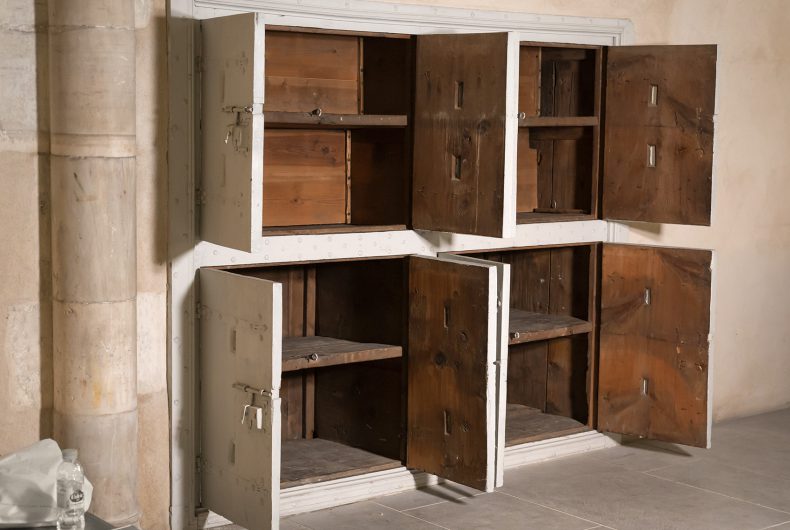
« Chartrier » of the cathedral of Saint-Jean-de-Maurienne (France) - 15th century
Integrated into the walls of the treasure room, the wood of this stone Pine (Pinus cembra) chartrier is an important testimony of the cathedral’s liturgical history, but also a precious source for dendrochronological calibration.
Collaboration: Regional Center of Conservation (ARC-Nucléart).
Medieval chests / Collection of the Hospices de Beaune (21) - 14th - 16th centuries
A large body of domestic furniture has been the subject of investigations relating to the use of wood according to its anatomical characteristics, its technological qualities and according to the possibilities of local or foreign supplies to the manufacturing workshops …
Collaborations: Hôtel-Dieu de Beaune, DRAC Bourgogne-Franche-Comté
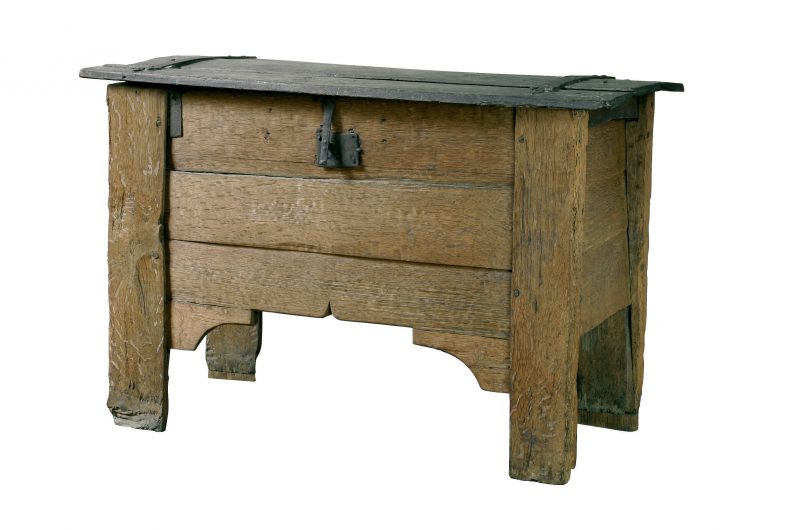
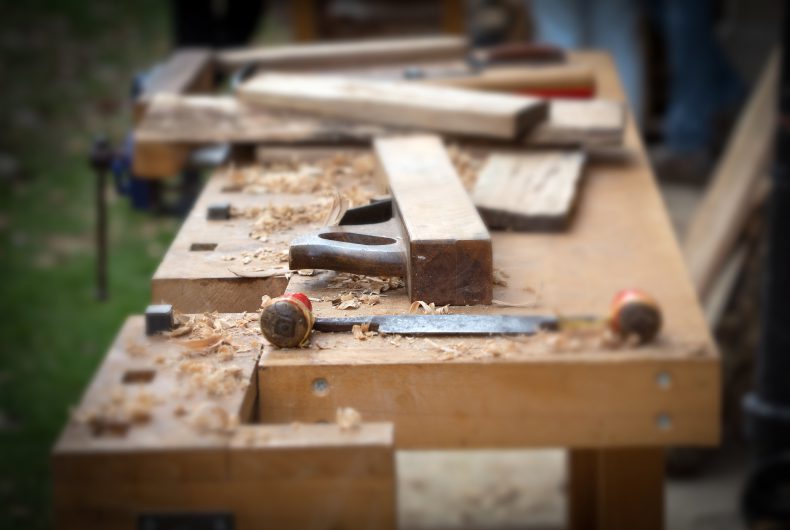
The true from the false / experimentation and contribution to the expertise
The expertise of a composite work brings together a set of specialities of which archaeodendrometry is a key discipline; the reuse of old wood is then proven, the machining by means of anachronistic or uncontrolled tools being able to be scrupulously described by means of experiments/restitutions …
Collaborations: National Heritage Institute (INP), Center for Research and Restoration of French Museums (C2RMF), Central Office for Combating Trafficking in Cultural Property (OCBC), French courts

